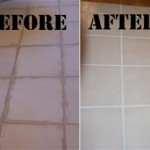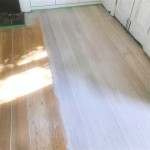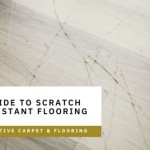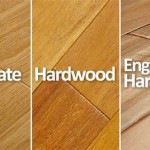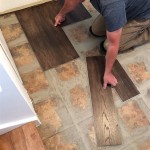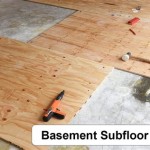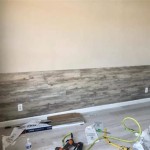How to Remove Sticky Carpet Glue From Wood Floor
Removing carpet glue from a wood floor is a common challenge encountered during renovation or flooring replacement projects. Carpet glue, designed for robust adhesion to various surfaces, can leave a stubborn residue that demands careful and methodical removal to prevent damage to the underlying wood. The success of this process hinges on understanding the type of adhesive used, the type of wood flooring involved, and employing appropriate techniques to dissolve the adhesive without harming the wood's finish or structure.
The type of glue used to install the carpet significantly impacts the methods required for its removal. Some adhesives are water-based, while others are solvent-based. Identifying the adhesive type is crucial to selecting the most effective and safe removal solution. Similarly, the type of wood floor is a critical consideration. Engineered wood, solid hardwood, and laminate flooring each react differently to solvents, heat, and scraping. Applying the wrong method or excessive force can permanently damage the wood's surface.
Before initiating the glue removal process, it is essential to gather the necessary tools and materials. These typically include: plastic scrapers, putty knives, a heat gun or hairdryer, mineral spirits or adhesive remover specifically designed for wood floors, clean cloths, safety glasses, and gloves. Proper ventilation is also critical, especially when using solvents, as they can produce harmful fumes. Protecting the surrounding areas with drop cloths is also recommended to prevent damage or staining from the solvents or loosened glue.
Preparation and Safety Measures
Prior to commencing the glue removal process, thorough preparation is paramount. This includes protecting oneself and the work area. Safety glasses are necessary to shield the eyes from splashes or debris. Gloves protect the hands from direct contact with adhesive removers and prevent the transfer of oils from the skin to the wood surface. Ensuring adequate ventilation is essential to mitigate the risks associated with solvent vapors. Open windows and use fans to create airflow, reducing the concentration of fumes in the work environment.
The preparation also involves protecting the surrounding area. Drop cloths or plastic sheeting should be used to cover furniture, walls, and any other surfaces that could be accidentally exposed to solvents or scraped glue. This protective barrier helps prevent unwanted stains, scratches, or damage. A clean and organized workspace promotes efficiency and reduces the likelihood of accidents.
Conducting a small test patch is an indispensable step before applying any adhesive remover to the entire floor. This test helps determine how the wood and its finish will react to the chosen solvent. Select an inconspicuous area, such as a corner or under a piece of furniture, and apply a small amount of the adhesive remover. Allow it to sit for the recommended time, then carefully observe any changes to the wood's appearance, such as discoloration, softening, or lifting of the finish. If adverse effects are noted, explore alternative removal methods or a different adhesive remover specifically formulated for more delicate surfaces.
Methods for Removing Carpet Glue
Several methods can be employed to remove carpet glue from wood floors, each with its own advantages and disadvantages. The choice of method depends primarily on the type of adhesive, the type of wood flooring, and the extent of the glue residue. These methods typically involve a combination of heat, solvents, and careful scraping.
Heat is often used to soften the adhesive, making it easier to scrape away. A heat gun or hairdryer can be used to warm the glue gently. It is crucial to maintain a safe distance and avoid overheating the wood, as excessive heat can damage the finish or even warp the wood. Move the heat source in a sweeping motion, focusing on small sections at a time. As the glue softens, use a plastic scraper or putty knife to gently lift and remove it.
Solvents are commonly used to dissolve the adhesive, breaking down its bond with the wood surface. Mineral spirits, adhesive removers specifically designed for wood floors, and even certain citrus-based cleaners can be effective. Apply the solvent to the glue residue and allow it to dwell for the recommended time, as indicated on the product label. This allows the solvent to penetrate the adhesive and weaken its grip. After the dwell time, use a plastic scraper or putty knife to gently remove the softened glue. It's important to use a plastic scraper to minimize the risk of scratching the wood floor.
For stubborn or thick glue residue, a combination of heat and solvents may be necessary. First, apply heat to soften the glue, then apply the solvent to further break down the adhesive. Allow the solvent to dwell, then carefully scrape away the softened glue. Repeat this process as needed, taking care not to over saturate the wood with solvent or apply excessive heat.
Throughout the scraping process, maintain a shallow angle with the scraper or putty knife to avoid gouging or scratching the wood. Apply gentle, consistent pressure. Avoid using excessive force, which can damage the wood's surface. Regularly clean the scraper or putty knife to prevent the transfer of glue back to the wood. If the glue is particularly difficult to remove, consider using a specialized adhesive removal tool designed for flooring.
Post-Removal Cleaning and Restoration
After removing the carpet glue, it is essential to thoroughly clean and restore the wood floor to its original condition. This involves removing any remaining adhesive residue, cleaning the surface, and potentially refinishing the affected area. The goal is to restore the floor's appearance and protect it from future damage.
Begin by wiping the floor with a clean, damp cloth to remove any lingering solvent or glue residue. Use a mild detergent specifically designed for wood floors if necessary. Avoid using excessive water, as this can damage the wood. Dry the floor thoroughly with a clean, dry cloth. Inspect the floor for any scratches, gouges, or discoloration. Minor scratches can often be buffed out with a fine-grit sandpaper or a specialized wood scratch repair kit.
If the glue removal process has damaged the wood's finish or caused discoloration, refinishing the affected area may be necessary. This involves sanding the area to remove the old finish, applying a stain to match the existing floor color, and then applying several coats of polyurethane or other protective finish. It is crucial to follow the manufacturer's instructions for the refinishing products and to allow adequate drying time between coats.
In some cases, it may be necessary to refinish the entire floor to ensure a uniform appearance. This is particularly true if the glue removal process has resulted in significant damage or discoloration. Refinishing the entire floor provides an opportunity to address other imperfections and to update the floor's finish. Consult with a professional flooring contractor for guidance on the best refinishing options for your specific type of wood floor.
Once the cleaning and restoration process is complete, apply a wood floor protector to help prevent future damage. This can include felt pads under furniture legs, area rugs in high-traffic areas, and regular cleaning with a wood floor cleaner. Proper maintenance will help prolong the life of the floor and keep it looking its best.

Flooring How Can I Remove Carpet Adhesive From Hardwood Floors Home Improvement Stack Exchange

Removing Glue Or Adhesive From Hardwood Floors The Speckled Goat

Removing Glue Or Adhesive From Hardwood Floors The Speckled Goat

How To Remove Glue From Wood Floors Pete S

How To Remove Carpet Glue Goo Gone

Removing Glue Or Adhesive From Hardwood Floors The Speckled Goat

How To Remove Carpet Glue From Wood Concrete Floors Ultimate Diy Guide

Don T Let Carpet Glue Ruin Your Flooring

How To Remove Carpet Glue And Floor Adhesive View Our Tips

Removing Glue Or Adhesive From Hardwood Floors The Speckled Goat
See Also
